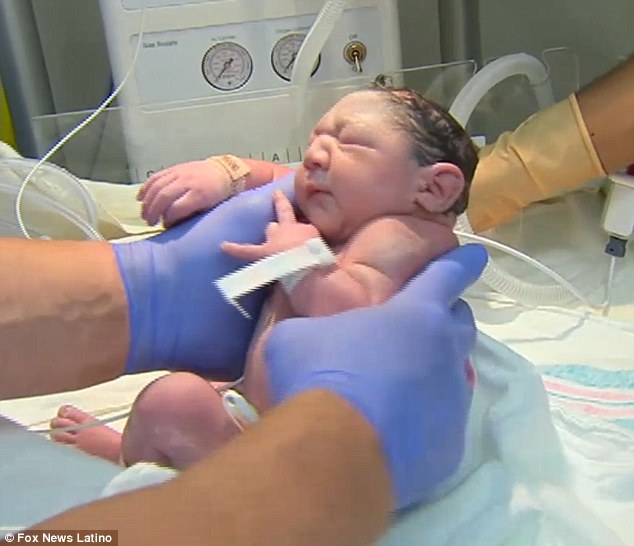History
Citrullinemia was first reported in 1962 (McMurray et al 1962). Its name derives from the marked elevation of L-citrulline in blood of affected individuals. This disorder has also been called “citrullinuria” because of the increased excretion of L-citrulline in urine and “argininosuccinic acid (argininosuccinate) synthetase deficiency” to denote its enzyme defect. Heterogeneity is seen clinically, biochemically, and at the molecular level.
Citrullinemia is a term for 2 different inherited defects of the urea cycle: deficiency of the enzyme argininosuccinate synthetase (classic citrullinemia, citrullinemia type 1, or CTLN1) or of the deficient amino acid transporter citrin (citrullinemia type 2 or CTLN2).
Overview
Citrullinemia type 1 is similar to all urea cycle disorders and presents mostly with severe neonatal onset (with very little to no residual enzyme activity in all organs) or as a late-onset form (with reduced enzyme activity in all organs). Until the development of modern methods of pharmacologic therapy, the disease course was uniformly lethal. Citrullinemia type 1 is genetically heterogeneous, and there has been a variety of different clinical phenotypes in patients with partial residual activity of the defective enzyme.
Frequency
Citrullinemia type I affects one out of every 57,000 babies born in the United States.
Citrullinemia type 1 can present at any age with acute neonatal- or early-onset (28 days or earlier) hyperammonemic coma or late-onset (later than 28 days) disease manifestation.
Type I (CIT): the “classic” form seen in babies and a “mild” form that is first seen later in childhood or adulthood. Some signs of the mild form are different from the classic form seen in babies.
Signs and Symptoms
Babies usually start to show signs within the first few days of life. Signs of classic CIT include:
- Sleeping longer or more often
- Tiredness
- Poor appetite
- Vomiting
- Seizures (Epilepsy)
- Irritability
- Delayed growth
- Mild CIT may share some of the signs of classic CIT.
Many of these signs may occur when your baby eats foods that their body cannot break down. They can be triggered by long periods of time without eating, illnesses, and infections.
Markedly elevated plasma citrulline is the hallmark of these disorders. Diagnosis is established by enzymatic or mutation analysis.
Dietary Treatments
Your baby may need to follow a restricted diet in order to avoid foods that your baby cannot break down. A dietician or nutritionist can help you plan the right diet for your child.
Your baby’s doctor might also recommend special formulas and foods for babies with citrullinemia, type I (CIT). These formulas will likely need to be continued through adulthood.
Supplements and Medications
Your baby’s doctor may prescribe medications to help lower ammonia levels in your baby’s blood. Everyone has some ammonia is their blood, but high levels can be toxic.
Arginine supplements may also be helpful for babies with CIT. Arginine is a natural substance that can help prevent the build-up of ammonia in individuals with CIT. Your baby’s doctor can write a prescription for these supplements.
Treatment of citrullinemia type 1 consists of a protein-restricted diet, ammonia scavenger drugs, and L-arginine supplementation. Liver transplantation cures recurrent hyperammonemic episodes, but will not restore irreversible neurologic sequelae.
Cause
In citrullinemia, type I (CIT) babies do not make enough of the enzyme arginosuccinate synthetase (ASS1). When ASS1 is not working correctly, the body cannot remove ammonia through the urine. This causes a dangerous build-up of ammonia in the blood.
CIT is an autosomal recessive genetic condition. This means that a child must inherit two copies of the non-working gene for CIT, one from each parent, in order to have the condition. The parents of a child with an autosomal recessive condition each carry one copy of the non-working gene, but they typically do not show signs and symptoms of the condition. While having a child with CIT is rare, when both parents are carriers, they can have more than one child with the condition.
Testing
Follow-up testing after Newborn Screening will involve checking your baby’s urine and blood samples for harmful levels of acids and toxins. Certain acids and toxins build up in the body when a child has an amino acid condition, so measuring the amounts of these substances in your baby’s body can help doctors determine if your baby has a condition.
High levels of ammonia and an amino acid called citrulline in the blood and orotic acid in the urine might indicate that your baby has CIT. Sometimes follow-up testing may also include testing a very small sample of skin.
DNA Labs in Pakistan: https://dnalabspakistan.com/genetic-test-citrullinemia-cost-a66.html
Expected Outcomes
Babies who receive early treatment for citrullinemia, type I (CIT) can have healthy growth and development. This is why newborn screening for CIT is so important.
Some children can still have high ammonia levels, even with treatment. These children may need to seek treatment in a hospital to remove ammonia from their blood.
It is important to treat CIT early because babies who do not receive treatment are at risk for coma, brain damage, or death.
Future
Currently, international networks for rare metabolic diseases (UCDC, E-IMD, JUCDC) aim to more completely describe the initial and evolving clinical phenotype of urea cycle disorders such as citrullinemia type 1 and type 2.
Referrences
http://www.medlink.com/article/citrullinemias_types_1_and_2#S4
https://www.babysfirsttest.org/

Leave a Reply